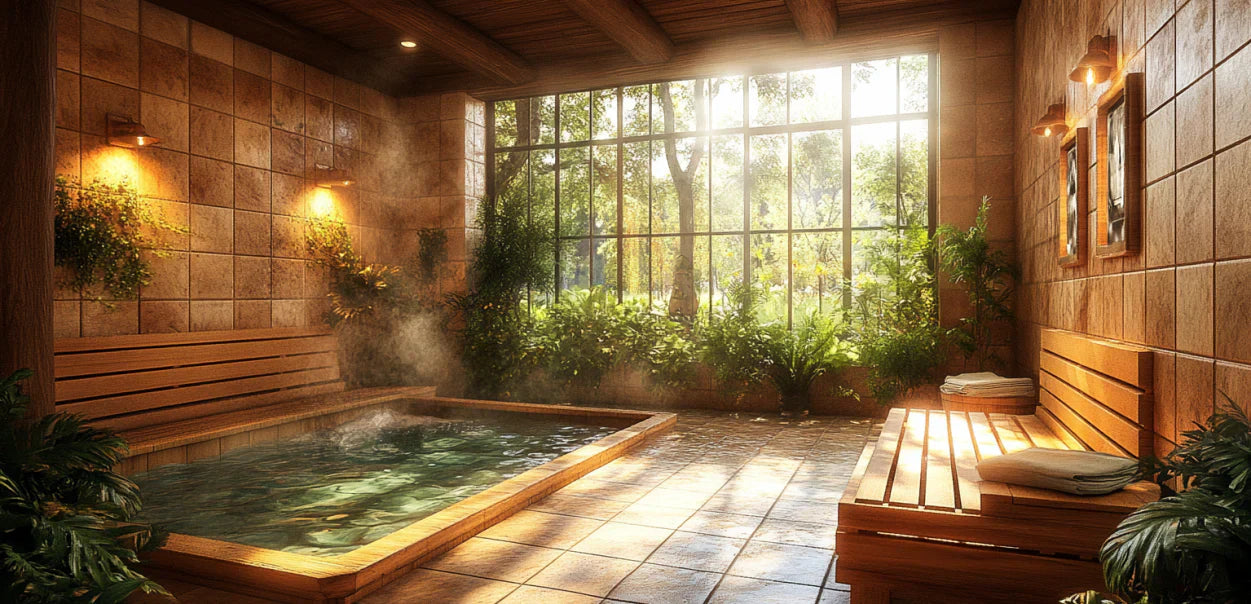Cold Plunge = Heart Attack? 20+ New Statistics On Ice Baths


Nobody really expects ice water immersion to be a heart-healthy practice, yet new research debunking cold plunge heart attack myths is catching serious attention from cardiologists. What started as a recovery ritual for elite athletes has evolved into a mainstream wellness trend, and there is more to the heart health side of it than most people realize.
Now, if you are wondering how to safely enjoy the benefits of cold water therapy while understanding the science behind these practices, we have compiled the evidence. This article breaks down the real scientific data on cold immersion safety based on the latest peer-reviewed research and clinical observations.
Top 6 Scientific Facts About Cold Plunge Heart Attack Connections (Editor’s Picks)
We've pulled together standout stats and facts from the latest scientific research about cold plunge heart attack connections. Here are 6 you'll definitely want to see:
|
1 |
Heart rate and blood pressure increase by 5-8% during cold water immersion at 14°C |
|
2 |
Systolic blood pressure rises by 20–40 mmHg during cold plunges |
|
3 |
A cold plunge can increase your heart rate by 10–20 bpm almost instantly |
|
4 |
530% increase in plasma noradrenaline during cold water immersion |
|
5 |
Plasma aldosterone increases by 23% during cold water immersion |
|
6 |
Two minutes in 10°C water can triple norepinephrine levels |
Does Cold Plunge Trigger A Heart Attack?
Cold plunges can potentially trigger heart attacks in individuals with existing heart conditions. However, if you don't have an underlying heart condition or other risk factors, there's generally no need to worry—most healthy individuals tolerate cold exposure safely when done properly.
Heart rate and blood pressure increase by 5-8% during cold water immersion at 14°C (NLM)

Cold water immersion (14°C) increased heart rate and systolic and diastolic blood pressure by 5%, 7%, and 8%, respectively.
Cold plunges can trigger autonomic conflict, potentially affecting heart rhythm
Sudden exposure to cold water can trigger a clash between the body’s “fight or flight” and “rest and digest” systems. This reaction, known as autonomic conflict, may lead to irregular heartbeats.
Systolic blood pressure rises by 20–40 mmHg during cold plunges (American Physiological Society)

Cold water triggers the body’s stress response, causing blood vessels to constrict and blood pressure to spike. This rise is temporary but can be intense, especially for first-time users.
Regular cold exposure reduces key risk factors for heart disease (Generator Lab Athelete)
In people adapted to cold, researchers found lower levels of harmful proteins linked to heart risk, along with improved antioxidant activity. This means their bodies were better at handling stress and protecting cells.
A cold plunge can increase your heart rate by 10–20 bpm almost instantly

The body reacts quickly to cold exposure, triggering a short-term spike in heart rate. This reaction helps prepare the body to handle the cold, but usually levels off after the first minute.
Peripheral blood flow drops during cold water immersion (Scholars’ Bank)
Cold water causes blood vessels in the outer body to tighten, cutting blood flow to the skin and extremities. This is the body’s way of preventing rapid heat loss.
Statistics About The Scientific Benefits Of Cold Plunge
530% increase in plasma noradrenaline during cold water immersion (UpToDate)

This substantial catecholamine surge activates your sympathetic nervous system, contributing to improved mood, alertness, and energy while potentially enhancing fat metabolism.
Cold plunges are effective with durations between 30 seconds and 10 minutes
Experts suggest that spending anywhere from 30 seconds to 10 minutes in cold water can offer benefits like improved recovery, reduced inflammation, and mental clarity. The key is consistency and choosing a time that feels challenging but manageable.
Plasma aldosterone increases by 23% during cold water immersion (ResearchGate)

This hormonal adaptation helps regulate water and mineral balance in the body during cold stress, contributing to the body's overall adaptation to regular cold exposure.
87% of regular cold water participants report improved mood and reduced tension
Questionnaire-based studies found that the vast majority of winter swimmers experienced mental wellness benefits, including decreased stress levels and enhanced mood compared to control groups.
Plasma dopamine increases by 250% during cold immersion at 14°C (Springer Nature)

This significant increase in the "feel-good" neurotransmitter helps explain why many cold plunge users report improved mood, mental clarity, and reduced stress following sessions.
The brachial artery diameter shrinks during cold water immersion
When you enter cold water, the arteries in your arms tighten to reduce heat loss. This natural response helps redirect blood toward your core to maintain body temperature.
163% increase in diuresis (urination) during cold water immersion at 14°C (NLM)

This dramatic increase in urine production helps explain why cold plunges effectively reduce water retention and bloating, potentially improving physical appearance.
A single cold plunge can lower anxiety levels for up to 12 hours
Cold exposure has been linked to noticeable drops in anxiety and stress for several hours after use. Many people say the effects feel similar to the relief after intense exercise.
Benefits Of Cold Plunge For Athletes
2 minutes in 10°C water can triple norepinephrine levels (American Physiological Society)

Even brief exposure to cold water has a strong effect on the nervous system. This spike helps explain why cold plunges are linked to improved focus, mood, and heart resilience.
Ice bath therapy reduces muscle temperature by approximately 7°C below post-exercise values
This significant temperature reduction alters metabolic activity, blood flow, and inflammatory responses in exercised muscles for extended periods.
Muscle soreness drops by up to 50% with cold water immersion

Cold water helps calm inflammation and slow nerve activity, which leads to less soreness after workouts. It's one of the most research-backed recovery methods available.
Cold water immersion for athletes works best between 8°C and 15°C (Springer Nature)
Most recovery protocols for athletes use water temperatures in this range, with 10°C being the most studied. These temperatures are cold enough to reduce muscle soreness without risking numbness or overexposure.
Who Should Avoid Cold Plunges: Medical Contraindications
Despite the many potential benefits of cold water immersion, it's not appropriate for everyone. Based on the research, certain populations should exercise caution or completely avoid cold plunge therapy:
Individuals with diagnosed heart conditions should consult a physician before attempting cold plunges (Healthline Media)

Cold water immersion increases heart rate and blood pressure by 5-8%, creating additional strain on the cardiovascular system that could be dangerous for those with heart conditions.
Those with known cardiac arrhythmias should be extremely cautious
Research has identified that the "conflict of autonomic response could be a major contributor to the high incidence of cardiac arrhythmias among healthy individuals when immersed in cold water," making this particularly risky for those with existing rhythm disorders.
People with uncontrolled hypertension should avoid cold water therapy (Sauna House)

The research shows that cold water immersion at 14°C increases systolic and diastolic blood pressures by 7-8%, which could potentially trigger hypertensive crises in vulnerable individuals.
Individuals with poor vascular health should approach cold therapy with caution
The vasoconstrictive effect of cold water could exacerbate conditions like Raynaud's phenomenon or peripheral vascular disease.
Here’s a quick look at the high-risk contraindications for cold plunge therapy:
|
Medical Condition |
Risk Assessment |
Physiological Reason |
|
Uncontrolled Hypertension |
High Risk |
Cold immersion increases blood pressure by 7-8%, potentially triggering a hypertensive crisis |
|
Cardiovascular Disease |
High Risk |
Cold shock causes a 5% heart rate increase and significant cardiac strain |
|
Cardiac Arrhythmias |
High Risk |
Autonomic conflict during cold immersion increases the risk of dangerous arrhythmias |
|
Recent Heart Attack/Stroke |
High Risk |
Cold-induced blood pressure changes may compromise healing or trigger secondary events |
|
Severe Asthma |
High Risk |
Cold shock causes respiratory gasping and hyperventilation, potentially triggering severe attacks |
|
Raynaud's Disease |
High Risk |
Extreme vasoconstriction may trigger severe symptoms and tissue damage |
|
Uncontrolled Diabetes |
High Risk |
Cold-induced metabolic changes (350% increase) may destabilize blood glucose levels |
|
Pregnancy |
High Risk |
Significant hormonal and circulatory changes may affect placental blood flow |
|
Epilepsy |
High Risk |
Cold shock and decreased cerebral blood flow may trigger seizures in susceptible individuals |
|
Impaired Temperature Sensation |
High Risk |
Inability to detect dangerous cold levels increases hypothermia and frostbite risk |
Conclusion
So, is the cold plunge heart attack connection real? Not for most healthy people - although cold water temporarily stresses your cardiovascular system, the benefits typically outweigh the risks. The secret? Smart exposure. Start with brief sessions and gradually build your tolerance to unlock the full benefits.
And if you're ready to experience these cardiovascular adaptations safely at home, Nordvik has the solution. Our cold plunge systems feature precision temperature control and safety monitoring, ensuring optimal heart-healthy benefits every session.
FAQ
How long does it take for the cardiovascular system to adapt to regular cold plunging?
Most research indicates cardiovascular adaptation takes 4-6 weeks of consistent practice, with measurable improvements in autonomic regulation occurring after approximately 12-15 sessions.
Can medications affect cold plunge safety for heart health?
Yes - beta-blockers and calcium channel blockers may blunt your body's natural response to cold exposure, potentially leading to exaggerated hypotension or paradoxical hypertension during immersion.
Can I cold plunge safely if I have a family history of heart disease?
A family history alone doesn't necessarily contraindicate cold therapy, but it warrants more gradual adaptation and possibly medical clearance, especially if you have additional risk factors.
Does breathing technique affect cardiovascular response during cold immersion?
Controlled breathing can reduce cold-induced heart rate increases by 30-40% and moderate blood pressure spikes by keeping the sympathetic nervous system response in check.



